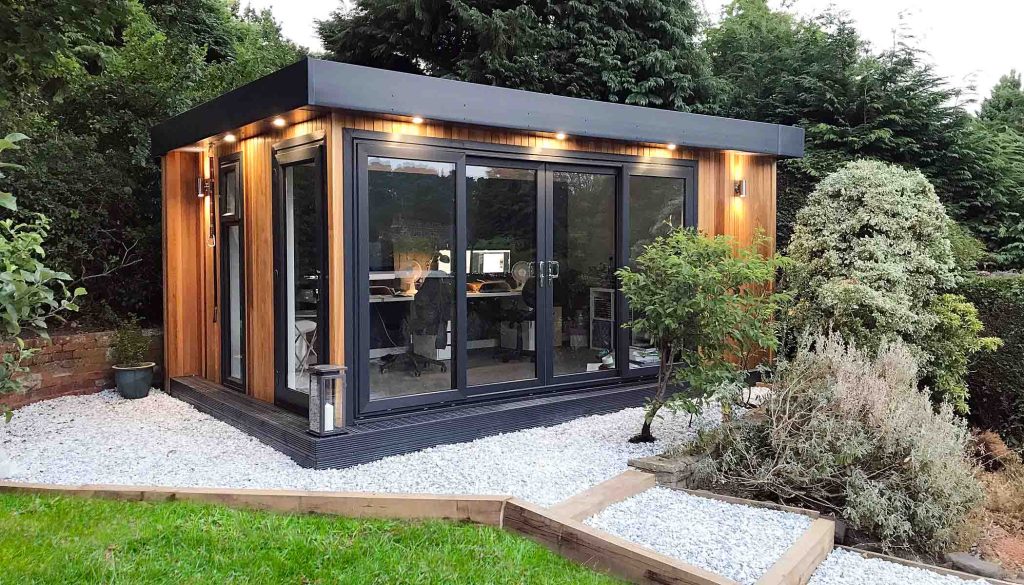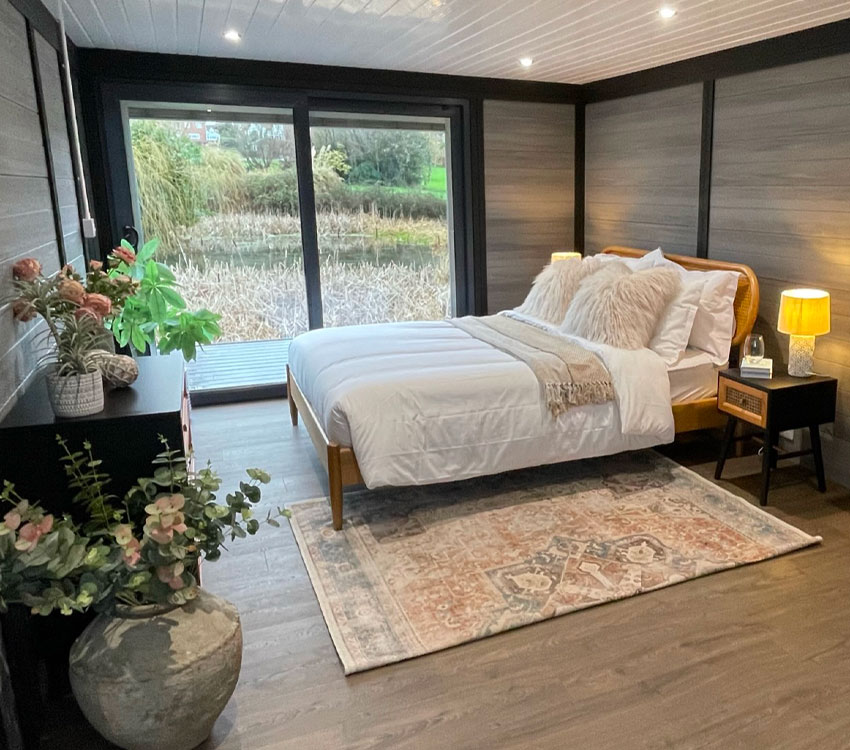What Size Restrictions Do You Have On Gardens, Rooms Or Other Spaces.?
The need for planning permission for the construction of conservatories, garden offices and outhouses, or garden rooms is dependent on dimensions. Here are some of the most common dimensions that could require you to apply for permission to plan.
If you're planning to construct a detached structure then you must be granted permission if your planned construction or any outbuildings exceed 50% of the total area surrounding the house.
Height limitations:
One story buildings: the maximum eaves should not exceed 2.5 metres, and for roofs with two pitches, or any other kind of roof it shouldn't exceed 4 m.
The building must be within 2 meters of the boundary of the property The maximum height of the building must not be more than 2.5 meters.
Floor Area:
If you do not require planning permission, however your structure has a surface that is larger than 30 square meters and is necessary to get approval from the building regulations.
Proximity to boundaries:
If the structure is located within 2 meters of the boundary, it is required to get permission to plan when the structure's height is more than 2.5 meters.
Building Usage
There is no strictly defined size limit, however the purpose of the garden space could affect the necessity for planning permission. Planning permission might be needed if, for instance, the building is intended to be used as a commercial or residential space.
Permitted Development Rights:
Permitted Development Rights have specific restrictions on size and conditions. These rights differ depending on whether a property is located within a protected area or subjected to other limitations.
Conservatories, extensions, and other types of conservatories:
For a single-story rear extension, the maximum depth for a single-story rear extension is usually 4 meters for detached homes and 3 metres for semi detached or terraced houses. It is possible to raise it to 8 meters or 6 meters in the Neighbourly Consultation Scheme, if certain conditions apply.
The height of an uni-story rear extension cannot exceed 4 metres.
Side Extensions:
For side extensions, width and height should not exceed four meters.
Volume Restrictions:
In certain areas (such as Conservation Areas and Areas of Outstanding Natural Beauty) an addition to a home that expands the size of the initial residence by more than ten percent (10 percent) or 50 cubic meters (whichever the greater number) will need planning permission.
Front Extensions
Planning permission will be required for extensions that go beyond the front of the house.
It is advisable to check with the local planning authority to confirm any regulations, since they could differ based on the local authority and the specific requirements of your home. Additionally, even the planning permission doesn't have to be sought the building regulations approval could still be necessary to ensure structural integrity and safety motives. Have a look at the recommended decking on grass for website examples including do you need planning permission for a garden room, outhouse builders, insulated garden rooms, do i need planning permission for a garden room with toilet, small garden office, garden buildings , garden office hertfordshire, best heater for log cabin, 4m x 4m garden room, garden room vs extension and more.

What Is The Maximum Height For The Garden As Well As Other Structures?
Specific height restrictions will determine if planning permission is needed for conservatories, garden rooms or outhouses. The following are some of the key aspects to be considered when determining height:
A detached outbuilding, or an extension with a dual pitched roof (such as a gable) should not be higher than 4 meters.
The maximum height for any type of roof (flat or single pitched etc.) shouldn't exceed 3 meters. ) The height of the roof should not exceed 3 meters.
Proximity to borders
The maximum height of a structure that is not more than 2 meters from the boundary must not be greater than 2.5 meters. This is also the case for similar outbuildings, such as sheds, garden rooms or other similar structures.
Height of the Eaves
The maximum height of eaves (the distance between the lower part of the roof and eaves) is not to exceed 2.5 meters for any structure.
Extensions and conservatories:
To extend the rear of a home that has only one story, height cannot exceed four metres. Included in this is the roof as well any parapet walls.
Side Extensions
Side extensions are restricted to a height of four meters. They are not allowed to be higher than the house that was originally built.
Special Roofs
Flat roof structures are generally restricted to a maximum height of 3 meters.
Additional Restrictions to designated areas
In areas of outstanding natural beauty, conservation areas and other designated zones, there might be higher height restrictions as well as planning permission required for structures that normally fall within permitted development rights.
Constructions in National Parks:
National Parks structures may also be subject to height restrictions which require approval for the planning process.
Roof Design
Height of highest part of roof (excluding chimneys and antennas) should be considered. Planning permission is required when the height of the building is greater than the allowed development limits.
The impact on neighbours:
Even if you are within the height limit, a planning permit may be required for the construction of structures if they've impacted on the view, privacy, or light of adjacent properties.
Maximum Height Total:
The overall height of any structure must not be more than 4 meters. For instance, an office in the garden with a roof that is double pitched should not exceed 4 metres at its tallest point.
Decking or Platforms
To prevent the requirement for permission to plan, decking or platforms that are connected to the structure must not elevate the level of ground by more 0.3 meters.
Checking with your local authorities regarding any recent changes or rules is always recommended. Even if your project is within the scope of the general permissible development guidelines however, there could be local deviations which require planning approval. Take a look at the most popular 5 by 5 meter room for more info including out house, outhouse garden rooms, garden rooms in St Albans, garden office hertfordshire, garden room permitted development, costco outbuildings, outhouse for garden, composite garden office, costco garden rooms, garden rooms in St Albans and more.

Regarding Location Restrictions What Kind Of Planning Permit Are You Required To Build Gardens?
Location restrictions are crucial when you are planning to construct gardens offices, conservatories or outhouses. Here are the most important location requirements to take into consideration.
Any building within 2 meters of the property limit must not exceed a maximum height of 2.5 meters. If the building's height exceeds this limit, planning permission is required.
Front of the property
Planning permission is generally required for any structure that is constructed in front of the house's main elevation (the side facing the front) since permitted development rights don't allow for extensions that go forward.
Part of the Property:
Side extensions are subject to height and dimension restrictions and may require planning permission if they go beyond the current side wall.
Rear of the Property:
Garden rooms and rear extensions situated at the rear of the house are subject to height and size restrictions. The planning permission must be obtained if these extensions are in excess of the permissible growth boundaries.
Designated Zones
More stringent controls are in place for conservation zones, Areas of Outstanding Natural Beauty, National Parks and World Heritage Sites. Planning permission is required for any construction regardless of the size.
Listed Buildings:
Buildings listed on the list are subject to strict regulations. Planning permission as well as listed-building consent are usually required to build a new structure or modify an existing one, irrespective of the area it is located on the property.
Green Belt Land:
In order to maintain open spaces, it's very difficult to build on greenbelts. In most cases, permits are required for new construction or major changes.
Flood Risk Zones
The structure should not cause more flooding in the event that the property is located in a flood risk zone. It is possible to obtain planning approval or a flood risk assessment.
Urban vs. rural settings:
Urban and rural settings have often different regulations. For instance, rural properties may have more lenient limitations on the size and location of outbuildings however, this isn't the case for all.
Highways & Public Rights of Way
Planning permission might be required in the case of structures that are located near highways, public rights-of-way or roads, to ensure it doesn't hinder safety, views, or access.
Shared Ownership or Leasehold Land
If the property is being rented, or part of an ownership sharing scheme, it could require additional permits. Planning permission could also be required depending on local regulations.
In the vicinity of other structures:
If the structure being built is to be built adjacent to existing structures or buildings that are located near neighboring properties, planning permission could be required to ensure that the structure does not have a adverse impact on neighbouring structures or the land.
It is recommended to always contact your local authority on planning for specific advice on your property and the area it is located. The rules vary based on local regulations. The compliance with all applicable restrictions can aid in avoiding legal issues and possible fines. Take a look at the best garden outhouses for website examples including myouthouse, garden rooms hertfordshire, outhouse uk, garden office electrics, outhouse buildings, garden rooms, what size garden room without planning permission, best electric heater for cabin, what size garden room without planning permission, outhouse for garden and more.

Comments on “Excellent Tips For Planning Permission On Garden Summer Houses”